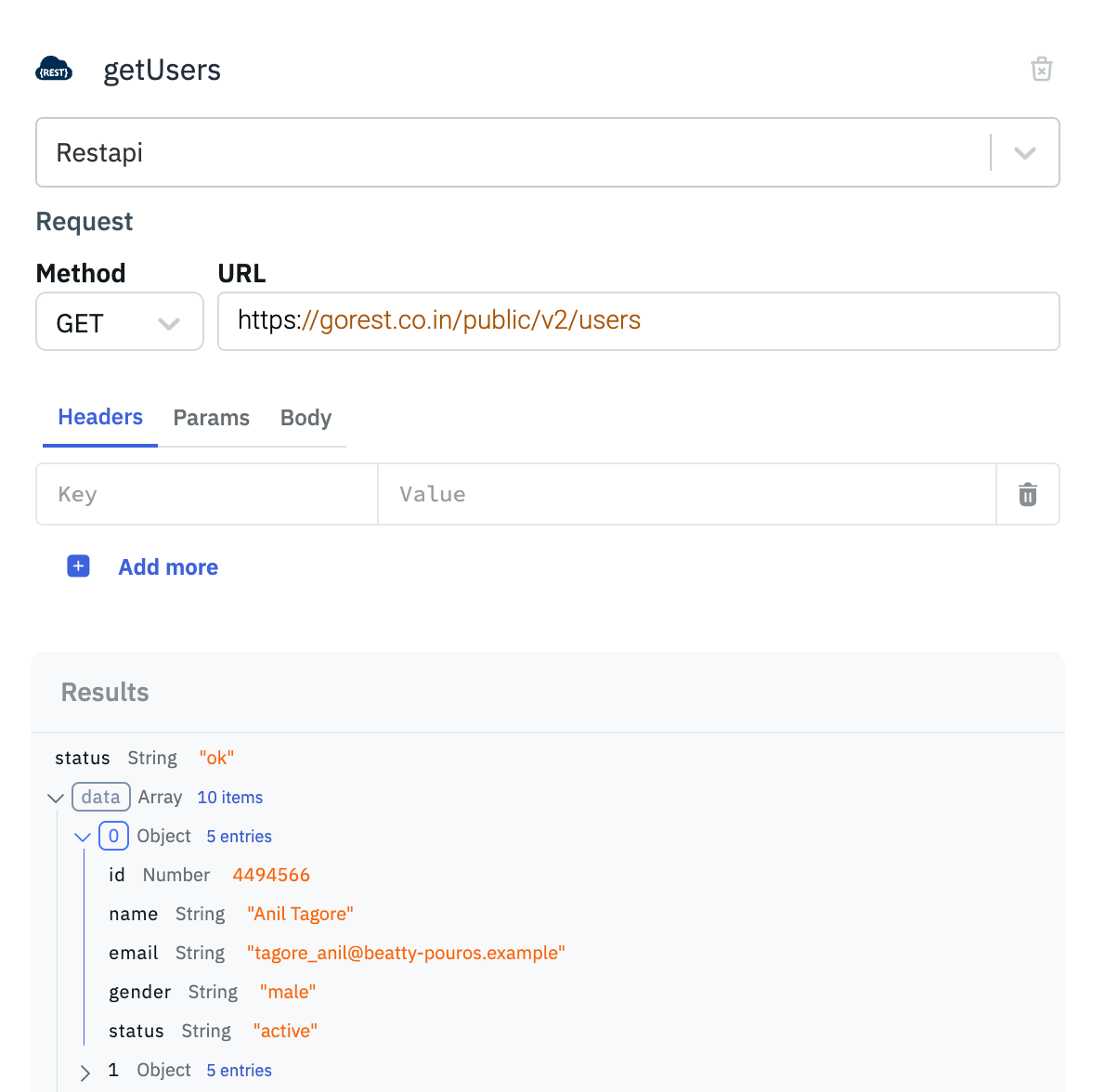Types of Nodes
Nodes are a graphical representation of each process in a workflow. Each node in the workflow passes over the result to the next node. Every new workflow will have two nodes - Start Trigger and Result. The Start Trigger node triggers the workflow to run. Once the workflow execution is completed, the resulting data is stored in the Result node type.
Apart from the default Start Trigger and Result nodes, there are an array of nodes that you can add to the canvas. They can be broadly divided into four types - JavaScript, If condition, Data sources and REST API. Let's take a closer look at each node.
JavaScript
The JavaScript node lets you write custom JavaScript code than runs on the server side. Server-side execution of code protects sensitive logic and data from exposure to the client and improves performance by offloading complex computations from the client. You can use the JavaScript code to transform data, create alert messages and more. The code you enter in each JavaScript node needs a return statement to ensure that the result is sent to the next node.
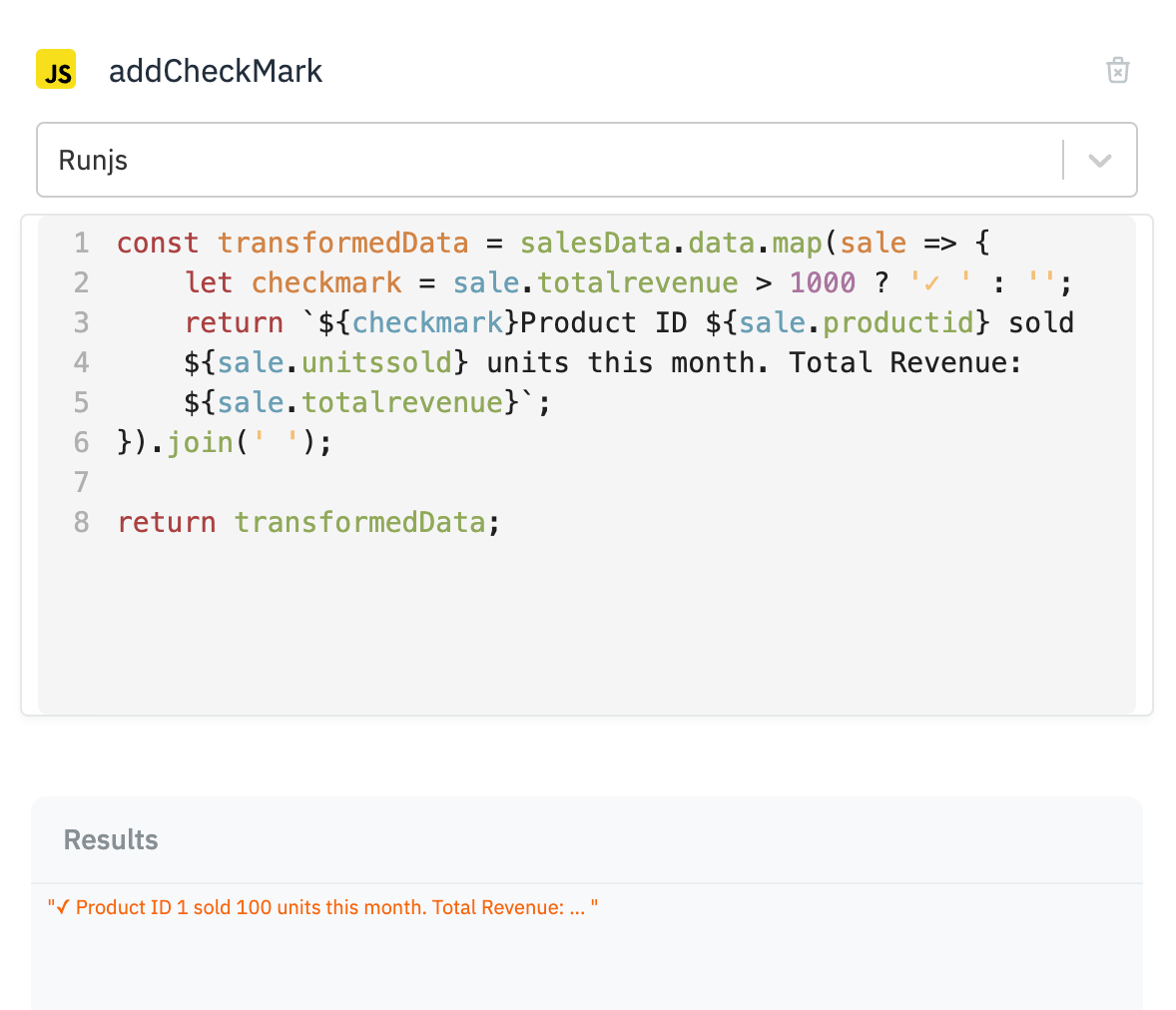
If condition
The If condition node can have one or two incoming flows and two outgoing flows. If it has two incoming flows, it'll only trigger after the execution of both the incoming flows is completed.
The If condition node triggers one of the outgoing flows depending on the given logical expression. If the expression evaluates to true, it activates the flow connected to the green circle. Conversely, if it's false, the flow linked to the red circle will be activated.
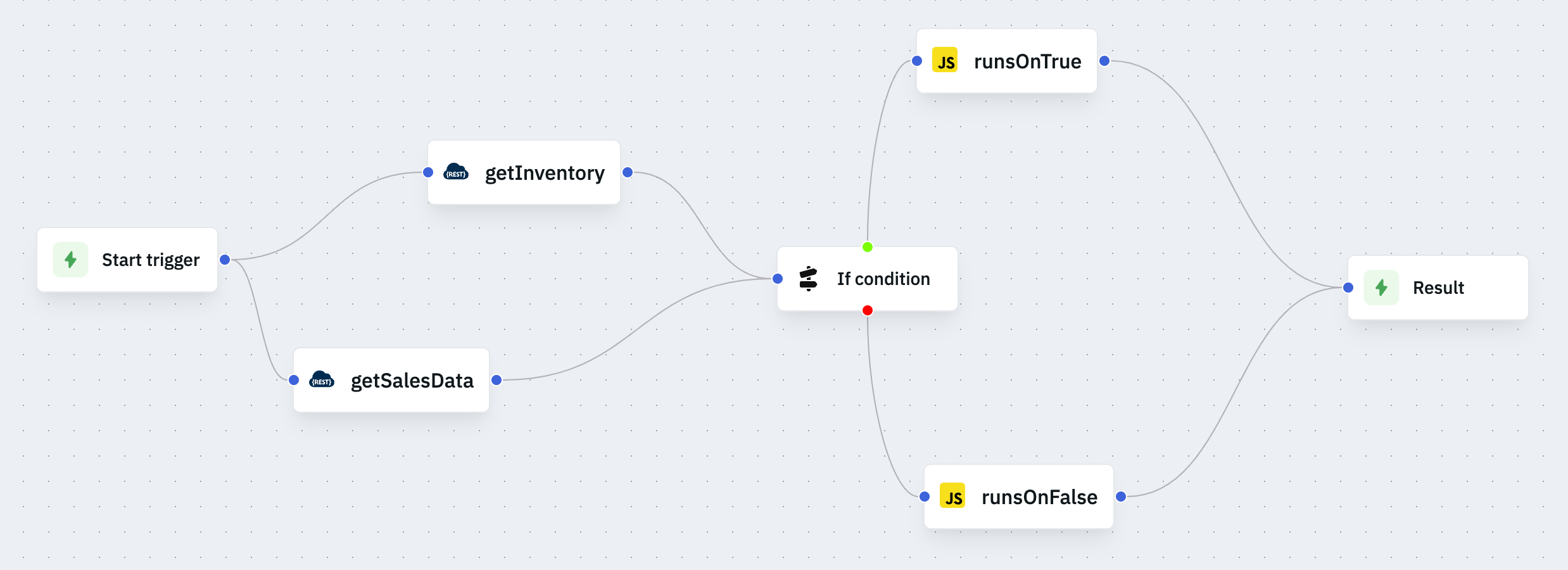
- If you click on the If condition node, a dialog box will appear on the right that accepts a logical expression.
- The If condition node can be handy when you want to run flows based on the data received or create alert messages based on success or failure of certain nodes.
Data Sources
In the flow builder of ToolJet, all the data sources you've set up will appear as nodes. These nodes can be utilized to perform intricate queries on your data sources, establish connections with APIs, send emails and messages, and more.
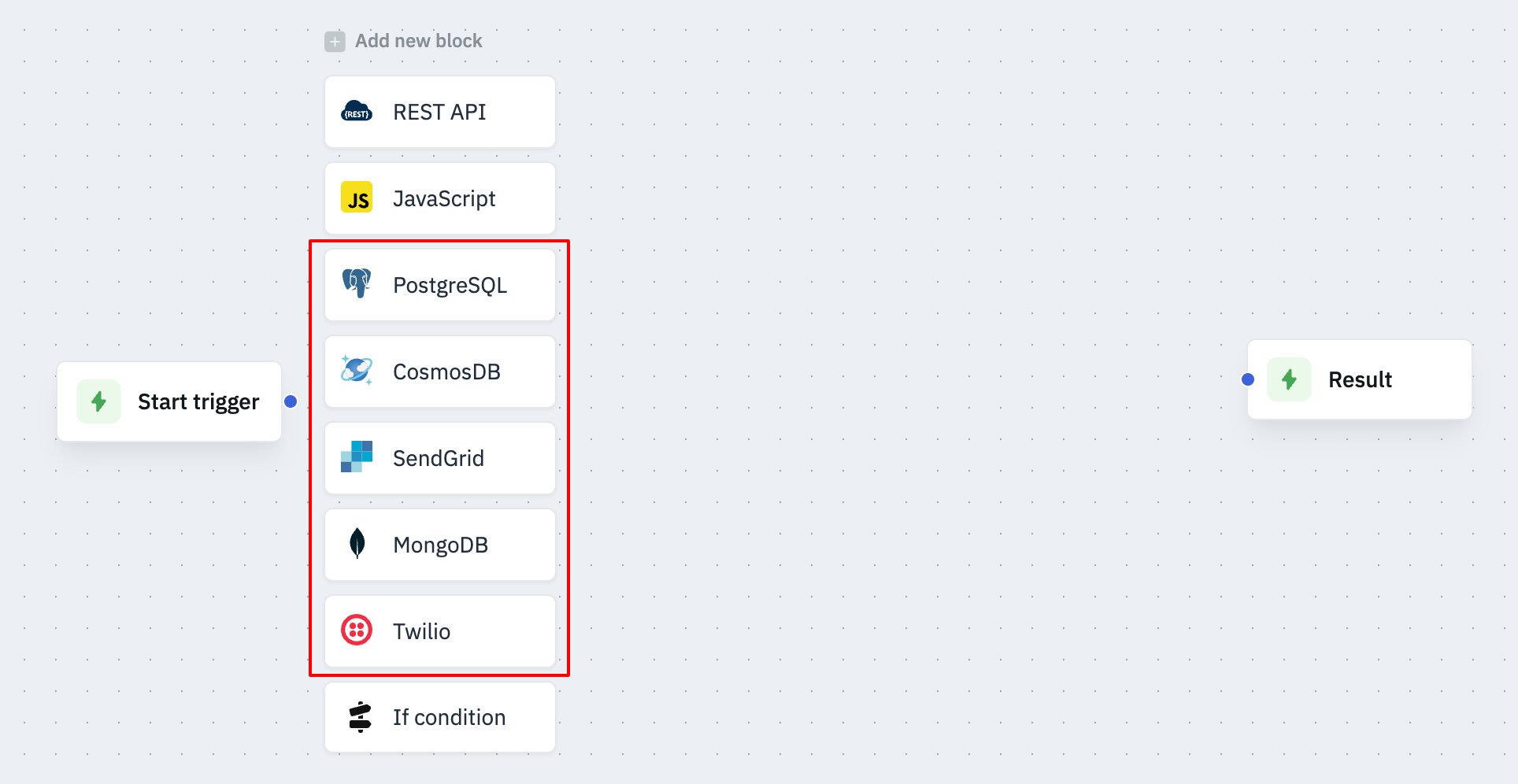
Each node type will have a different configuration based on the function it performs. For example, a Twilio node might come with the relevant fields needed to send an SMS, while a PostgreSQL node will have a query field to retrieve the data.
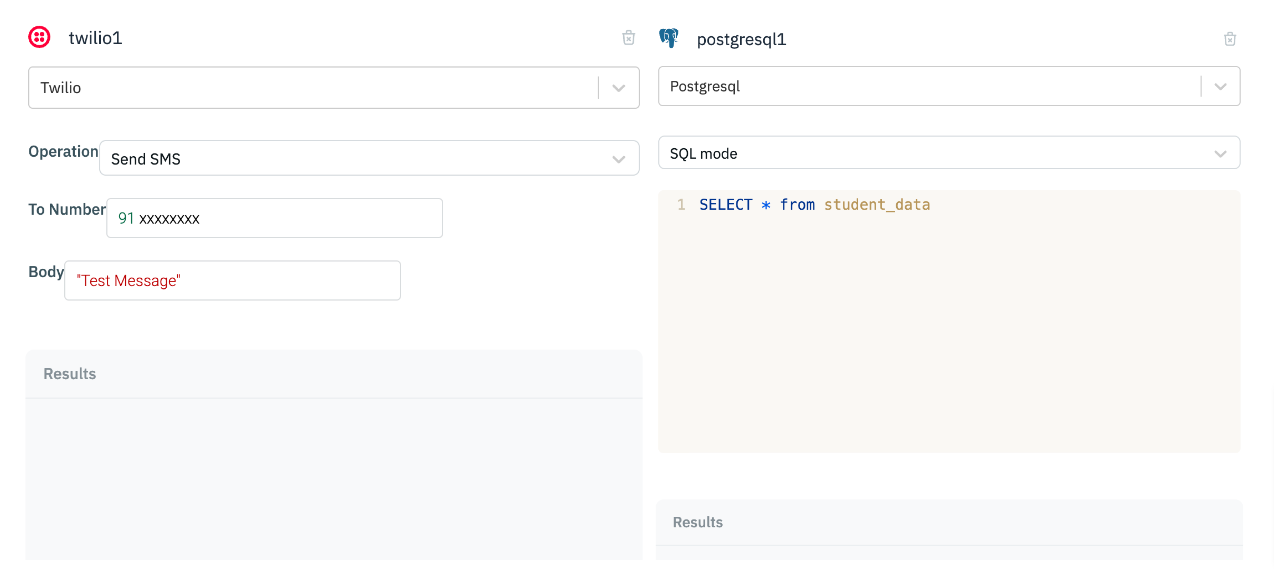
REST API
The REST API node acts as a bridge to connect with RESTful web services. By leveraging standard HTTP methods like GET, POST, PUT, and DELETE, the REST API node ensures smooth communication with web services, making data integration and manipulation more efficient and straightforward.
